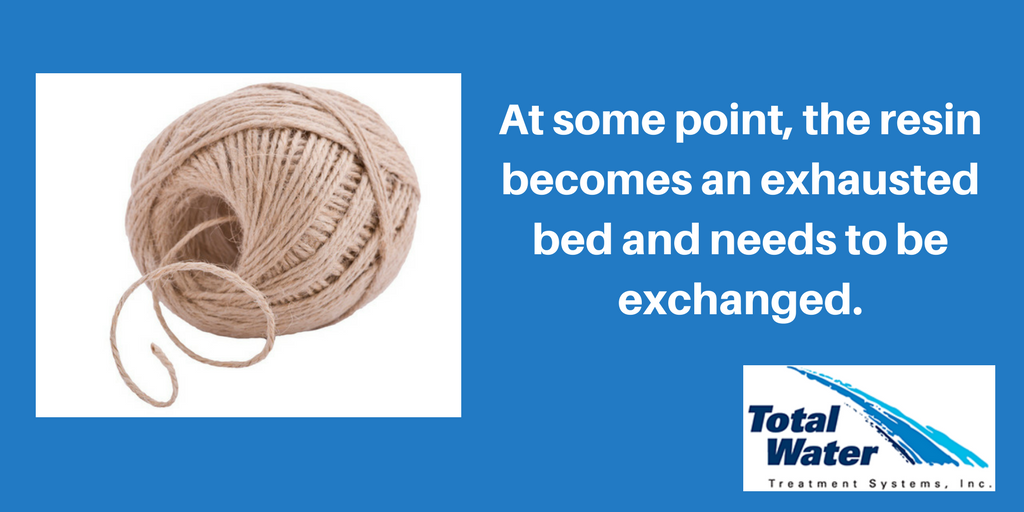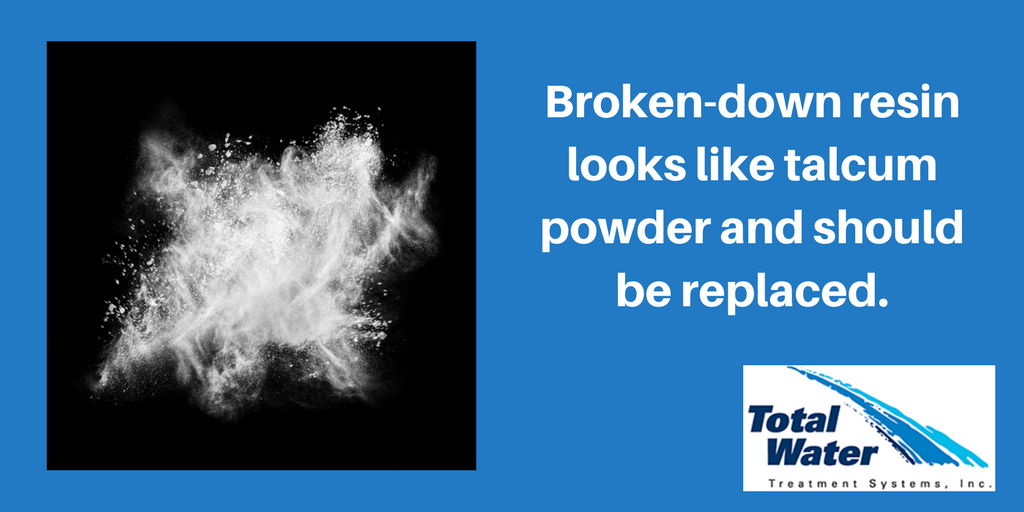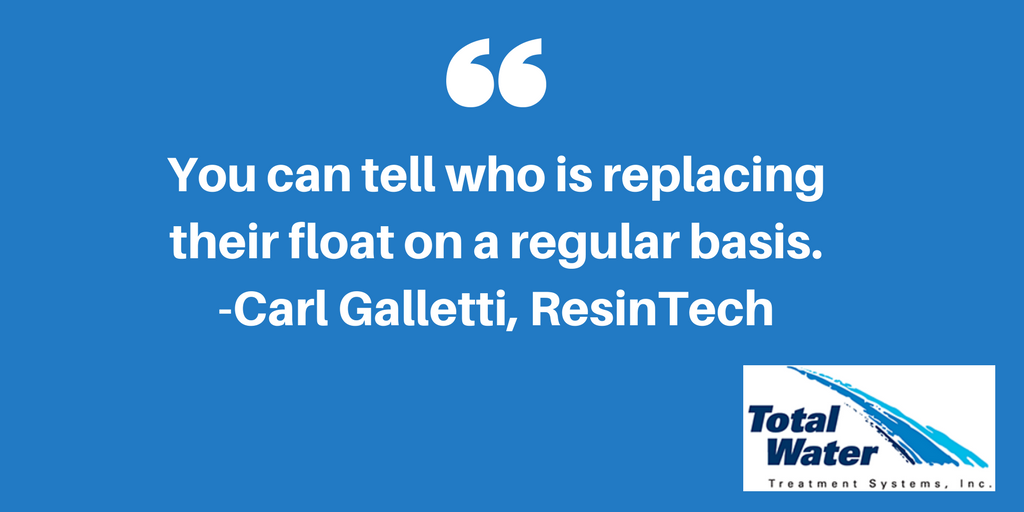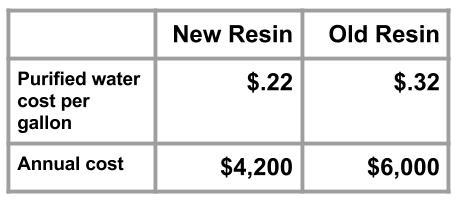The goal of the ion exchange resin in your tanks is to remove all the minerals and sediment that can contaminate water. But if the resin isn’t managed correctly, it could lead to excessive amounts of deionized water tank exchanges.
An ion exchange resin’s ability to attract minerals and sediments will lessen over time, and eventually, the resin bed will become exhausted. This will affect your system’s ability to produce the proper water capacity and quality you need for your particular application.
If your vendor is not changing their resin frequently enough, what remains is far less effective at purifying the water. The resin bed then needs to be regenerated more frequently, which could lead to more tank exchanges — ultimately costing you more.
Here’s a look at how to ensure you’re managing your resin — and your costs — correctly.
Why is the Ion Exchange Resin so Important and When Does it Become an Exhausted Bed?
We reached out to Carl Galletti of ResinTech to explain the vital role resin plays in the process. ResinTech Inc. manufactures a broad range of ion exchange resins for water and wastewater treatment.
Ion exchange resin is made of polystyrene sulfonate. Galletti explains that it’s like a long bead, like plastic ball bearings, – which holds the “functional group” — those ions that attract the undesirable ions. Galletti explains this bead is rolled up, like a ball of twine, and water passes through it. That’s where the ion exchange occurs.
The “functional groups” on the resin beads have the opposite charge of the contaminants they are trying to attract. The contaminants thus cling to the resin beads.
(This post provides more details on the different types of ion exchange resins.)
At some point, those functional groups get loaded up with so many undesirable ions that the resin becomes an “exhausted bed,” and needs to be exchanged. “It only has a certain amount of capacity,” Galletti said. At some point, you have to chemically wring out the sponge so it can be reused.
Why Does the Ion Exchange Resin Lose its Capacity?
The ability to replenish the ion exchange resin is one of its greatest benefits. But nothing lasts forever.
Over time, after continuous replenishing, the resin ages. The physical integrity will become compromised. Water will not pass so easily through the ball of twine. Or the functional groups will fall off.
The resin will start to break apart. Galletti talks about how the broken-down resin can be rubbed between the thumb and forefinger, and it looks like talcum powder. That’s when the resin should be replaced. But this isn’t always the case.
Replacing the Bed and Keeping Your Float Young
Typically exchange tanks are taken to water treatment facilities, and the resin is regenerated.
Much like your home water softener works, the resin is first flushed to free dirt and other particles. Then a brine solution is forced through the resin. Its sodium ions push the calcium magnesium ions away. Finally, the ion exchange resin is flushed again to remove the brine.
There are two types of methods for handling the resin at this point: Funnel plant and batch plant.
-
- In a batch plant, all the resin from various customers is commingled in a series of fiberglass tanks.
- In a funnel plant, resin can be stored based on specific customers. In the case of Total Water, we produce deionized water at such a high level of resistivity (18.2 megohms — water in its purest state), that we keep the resin separate so as not to risk any contaminants from other customers.
In either case, the ion exchange resin that is stored in the fiberglass tanks is your float. You should backwash the float regularly, so that the old, ineffective resin (remember the talcum powder-like substance) is flushed from the system.
“You can tell who is replacing their float on a regular basis,” Galletti said. “You are going to keep it in an age frame where it’s always 7-10 years age in total.”
The lifespan of the resin can be impacted by a number of factors, including:
-
- The frequency of regeneration
-
- Water high in chlorine or chloramines
-
- Water high in iron content or debris
- Mixing resins together
Check out this post on the four factors that shorten DI resin lifespan for more details.
How This Affects Your Pricing
Now that you understand what it takes to keep your system running at optimal capacity and your water efficiently deionized, let’s take a look at the pricing plans you can get locked into.
There are a variety of different ways to structure pricing, but this is typically the norm:
-
- Rental price for tanks on a monthly basis, plus exchange price
-
- Rental price for tanks, plus a price per gallon for water purified
- No rental cost at all, exchange price only
A purchasing agent for a municipality or a research institution may not understand how resin functions, and inquire how the industrial water services company maintains their float. They’ll be attracted by the low exchange price on the tanks, and sign the dotted line.
It’s then easy for a vendor to not maintain the resin like they should, and allow for the capacity to eventually lessen, thus necessitating more exchanges.
Here’s the annual cost of the new resin vs. old resin approach:
We use the cost per gallon approach because, at the end of the day, that’s what you’re paying. With the old resin approach, the deionized water quote could have tank exchange rates as much as 30% below competitive bids. But that’s because they’ll be exchanging tanks twice as much due to the fact that the resin is 10+ years old.
What Can You Do to Ensure You Receive Fair Pricing?
If maintaining the resin is the key to keeping your cost per gallon low, what are some of the things you can do to avoid getting locked into these types of contracts, or to improve the situation if you’re currently in one?
-
- Ask for a bid that provides the price per gallon. It’s the only way to get all the players on a level field.
-
- Avoid plans with a tank exchange rate 35% less than the competition. This is a red flag that the vendor doesn’t take care of their resin.
- Request the vendor to provide brand new resin, or newer resin for your plan. You can ask for a history of the resin that’s been used, and keep track of your tank exchange, but you’re really at the mercy of the vendor.
Obviously, your best approach is to get the right di water pricing plan upfront. Understanding how proper resin management works will help you steer clear of bids with extremely low price per tank exchange quotes. Over the long haul, it’s the most efficient and effective way to produce your deionized water.
We’ll do more than give you a quote we’ll visit your site to analyze your industrial water needs.






Follow Us